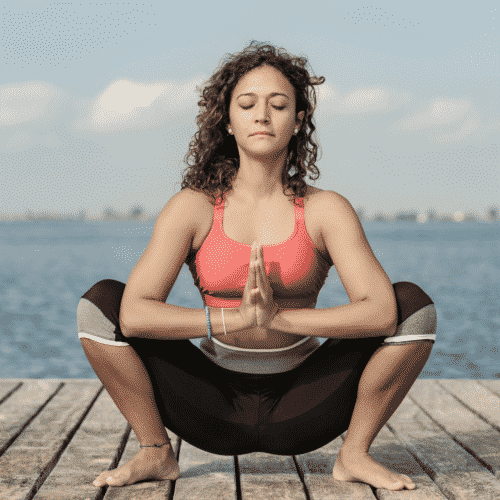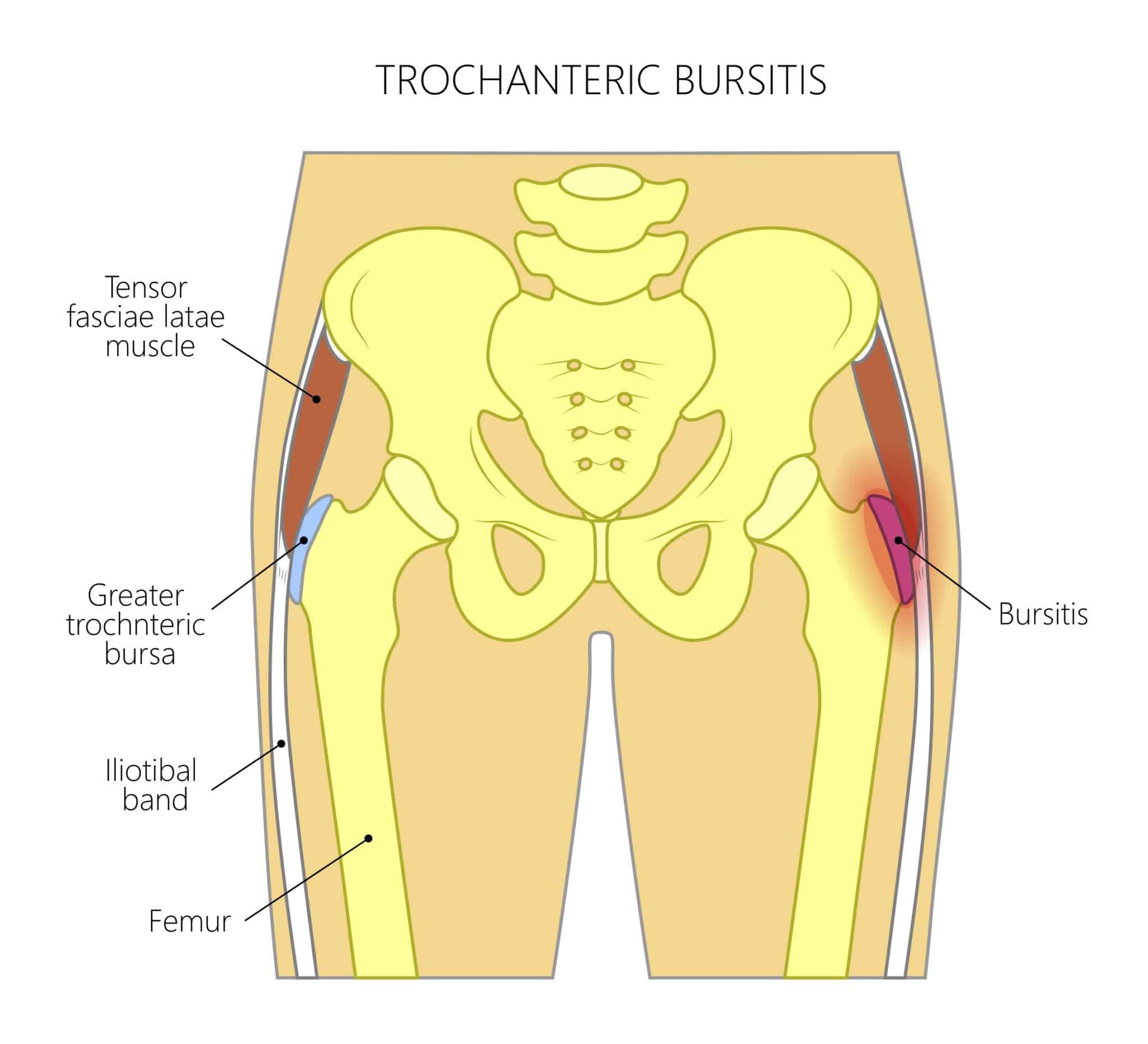

Hip bursitis is a common condition characterized by inflammation of the bursae, fluid-filled sacs that provide cushioning and reduce friction in the hip joint. The resulting pain and discomfort can significantly limit mobility and affect daily activities. While proper rest and medical treatment are crucial for recovery, incorporating specific exercises into your routine can help alleviate symptoms, strengthen the surrounding muscles, and promote healing. In this article, we will explore the nine best exercises for hip bursitis to help you find relief and regain function.
- 01. Clamshells:
Clamshells target the hip abductor muscles, which play a significant role in stabilizing the hip joint. To perform this exercise, lie on your side with your knees bent and feet together. Keeping your feet in contact, raise your top knee while maintaining alignment with your hips. Slowly lower it back down. Aim for three sets of 10 to 15 repetitions on each side.
- 02. Side-Lying Leg Lifts:
Side-lying leg lifts engage the hip abductors and strengthen the hip muscles. Lie on your side with your legs straight and stacked. Lift your top leg toward the ceiling, keeping it straight. Lower it back down with control. Perform three sets of 10 to 15 repetitions on each side.
- 03. Hip Bridges:
Hip bridges activate the gluteal muscles, which provide stability to the hips. Lie on your back with your knees bent and feet flat on the floor. Lift your hips off the ground, creating a straight line from your knees to your shoulders. Hold for a few seconds, then lower your hips back down. Perform three sets of 10 to 15 repetitions.
- 04. Standing Hip Flexor Stretch:
Stretching the hip flexor muscles can help relieve tension and reduce hip bursitis symptoms. Stand with one foot in front of the other in a staggered stance. Keeping your back straight, shift your weight forward while bending your front knee. You should feel a gentle stretch in the front of your back leg. Hold for 30 seconds on each side and repeat two to three times.
- 05. Seated Piriformis Stretch:
The piriformis muscle can contribute to hip bursitis when it becomes tight or inflamed. Sit on the edge of a chair with one ankle crossed over the opposite knee. Gently press down on the knee of the crossed leg until you feel a stretch in the buttock area. Hold for 30 seconds on each side and repeat two to three times.
- 06. Standing Calf Stretch:
Tight calf muscles can contribute to hip bursitis by altering your gait and putting additional stress on the hip joint. Stand facing a wall with your hands on it for support. Step one foot back, keeping it straight and your heel on the ground. Lean forward, feeling a stretch in the calf muscle of the back leg. Hold for 30 seconds on each leg and repeat two to three times.
- 07. Quadruped Fire Hydrants:
Quadruped fire hydrants target the hip abductors and external rotators. Start on all fours with your hands directly under your shoulders and knees under your hips. Lift one knee out to the side while keeping your hips and back stable. Lower it back down and repeat on the other side. Aim for three sets of 10 to 15 repetitions on each side.
- 08. Prone Gluteal Squeezes:
Prone gluteal squeezes activate the gluteal muscles and promote hip stability. Lie on your stomach with your legs straight. Squeeze your glutes together, lifting your legs slightly off the ground. Hold for a few seconds, then lower them back down. Perform three sets of 10 to 15 repetitions.
- 09. Step-Ups:
Step-ups strengthen the hip and leg muscles while improving balance and stability. Stand in front of a step or sturdy platform. Step one foot onto the platform, pushing through your heel to lift your body up. Step back down and repeat with the other foot. Perform three sets of 10 to 15 repetitions on each side.
Conclusion:
Incorporating these nine exercises into your routine can help alleviate pain, reduce inflammation, and promote healing for hip bursitis. However, it's important to consult with a healthcare professional or physical therapist before starting any exercise program, especially if you're experiencing severe pain or have underlying medical conditions. Remember to start slowly, listen to your body, and gradually increase the intensity and repetitions of each exercise as your pain and discomfort subside. With consistency and proper care, you can regain strength, flexibility, and function in your hips while managing hip bursitis effectively.





0 Comments